13B MFR - Different castings on rotary housings and how to identify?
#1
I would like to know if you could tell me how to identify MFR housings castings, and what are the pros/cons on each casting.
I just purchased an old track racer that had one type of casting, and many years ago purchased an engine from Jos Boon (Mazda team europe) that was used in rallying the Rx-7 Grp. B.
Look at the photos and share your thoughts. The smaller port is of the rally engine.
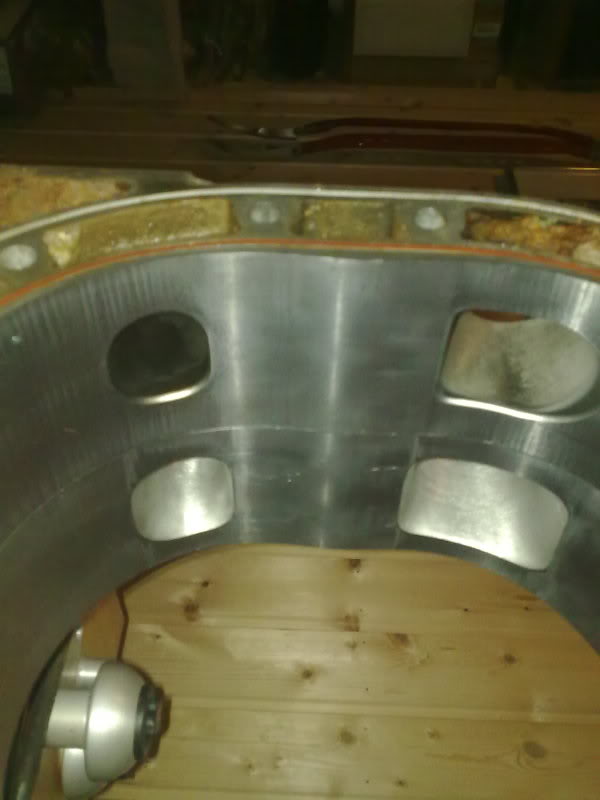
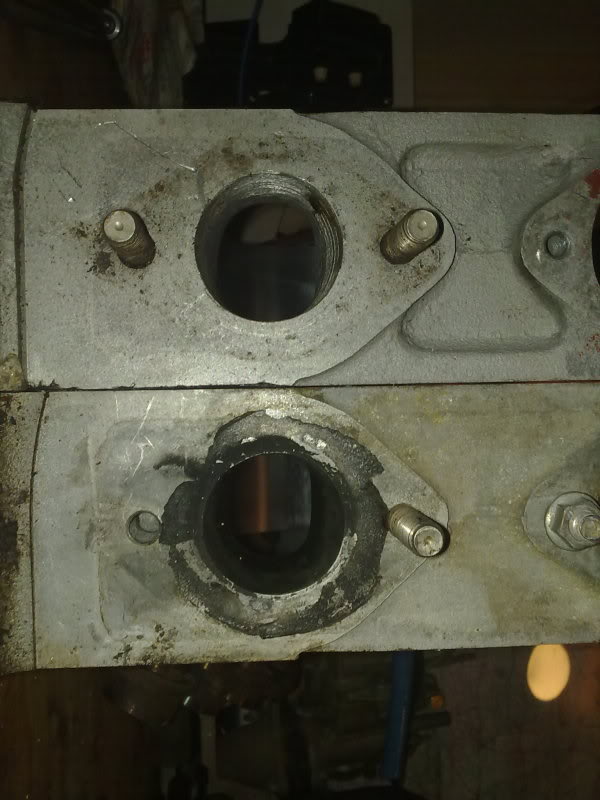
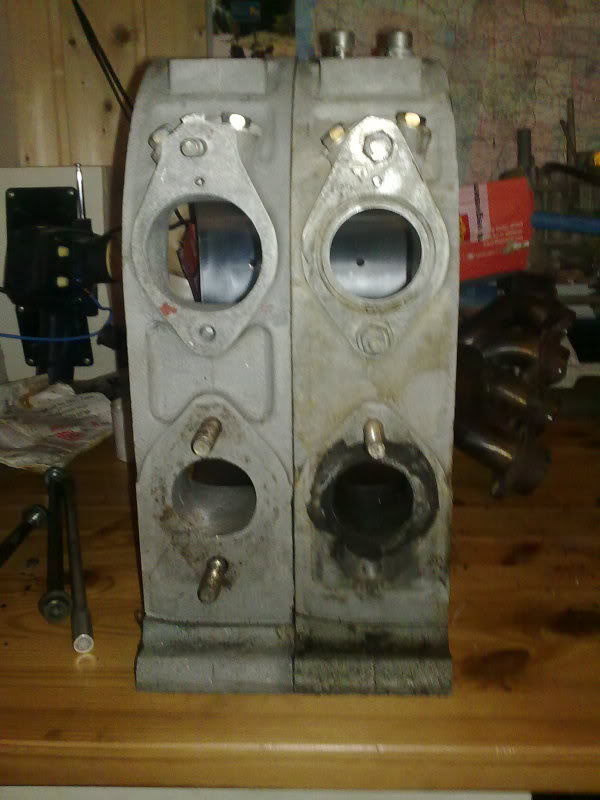
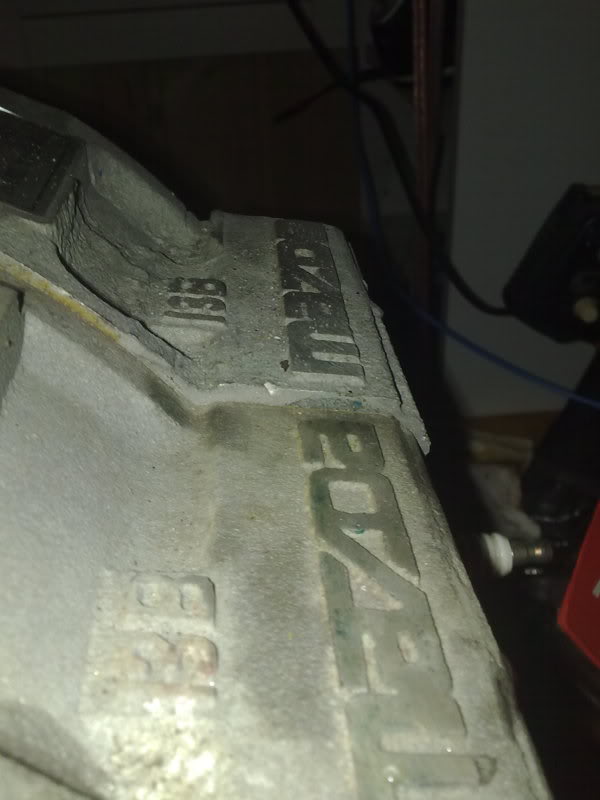
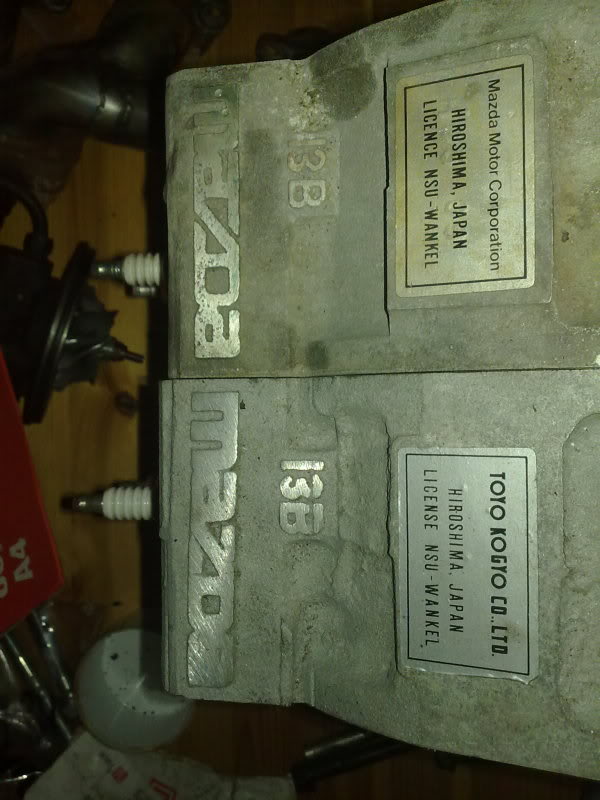 [/
[/
I just purchased an old track racer that had one type of casting, and many years ago purchased an engine from Jos Boon (Mazda team europe) that was used in rallying the Rx-7 Grp. B.
Look at the photos and share your thoughts. The smaller port is of the rally engine.




 [/
[/
#2
While both housings have differences in the exterior, they are the same piece. The big port version is a modified
version of the stock factory Pport housing. They were probably cast by various sub-contractors, and finish ground by Mazda. They are low production run sand castings that you can see in the poor exterior finish.
They all started off looking like the "D" shaped intake port.
The intake spacing and bolt patterns should be the same.
The stock "D" shaped port would have been about 330 HP at 10,000 RPM. Best power for the larger ports will be above 10,000 RPM.
The rotors need to be very light, and have short lives due to cracking.
So, if you go over 10,000 on every shift, look at the rotors every 4 to 6 races or so. (Magnaflux)
If you make up a new set of rotors be sure to take at least .012" off the sides above the oil scraper ring grooves to allow clearance for the rotors to tip a bit and allow for the crank flexing.
Also reduce the rear half of the rear main bearing or reduce the rear half of the bearing surface on the crank.
Also done because of crank flex.
You can manfacture a very convincing looking Pport housing with bits of a damaged racing housing and a good used
stock housing.
Use a 40 WT. synthetic in the sump, and a synthetic 2 cycle oil in the premix.
Look for no more than 1600 on both EGTs on the rich side. 12.4 or richer on the F/A gage.
Using steel apex seals in this engine is a bad idea, as you can see that a small corner piece is ruining one of the housings. That is why Mazda went to the wider corner piece to spread out the pressure on the chrome. Steel seals will not track the chrome over 9,000 RPM. Use one piece carbons or one piece ceramics.
Use at least 100 PSI of oil pressure and oil both ends of the crank. If you use a wet sump, you must use a full pan baffle.
Lynn E. Hanover
version of the stock factory Pport housing. They were probably cast by various sub-contractors, and finish ground by Mazda. They are low production run sand castings that you can see in the poor exterior finish.
They all started off looking like the "D" shaped intake port.
The intake spacing and bolt patterns should be the same.
The stock "D" shaped port would have been about 330 HP at 10,000 RPM. Best power for the larger ports will be above 10,000 RPM.
The rotors need to be very light, and have short lives due to cracking.
So, if you go over 10,000 on every shift, look at the rotors every 4 to 6 races or so. (Magnaflux)
If you make up a new set of rotors be sure to take at least .012" off the sides above the oil scraper ring grooves to allow clearance for the rotors to tip a bit and allow for the crank flexing.
Also reduce the rear half of the rear main bearing or reduce the rear half of the bearing surface on the crank.
Also done because of crank flex.
You can manfacture a very convincing looking Pport housing with bits of a damaged racing housing and a good used
stock housing.
Use a 40 WT. synthetic in the sump, and a synthetic 2 cycle oil in the premix.
Look for no more than 1600 on both EGTs on the rich side. 12.4 or richer on the F/A gage.
Using steel apex seals in this engine is a bad idea, as you can see that a small corner piece is ruining one of the housings. That is why Mazda went to the wider corner piece to spread out the pressure on the chrome. Steel seals will not track the chrome over 9,000 RPM. Use one piece carbons or one piece ceramics.
Use at least 100 PSI of oil pressure and oil both ends of the crank. If you use a wet sump, you must use a full pan baffle.
Lynn E. Hanover
#4
Hi.
The inner dia for the intake is 43 mm for rally and 55mm for track.
The exhaust inner dia is 41mm on rally and 42mm for track.
Regards
Frank Ove
#5
While both housings have differences in the exterior, they are the same piece. The big port version is a modified
version of the stock factory Pport housing. They were probably cast by various sub-contractors, and finish ground by Mazda. They are low production run sand castings that you can see in the poor exterior finish.
They all started off looking like the "D" shaped intake port.
The intake spacing and bolt patterns should be the same.
The stock "D" shaped port would have been about 330 HP at 10,000 RPM. Best power for the larger ports will be above 10,000 RPM.
The rotors need to be very light, and have short lives due to cracking.
So, if you go over 10,000 on every shift, look at the rotors every 4 to 6 races or so. (Magnaflux)
If you make up a new set of rotors be sure to take at least .012" off the sides above the oil scraper ring grooves to allow clearance for the rotors to tip a bit and allow for the crank flexing.
Also reduce the rear half of the rear main bearing or reduce the rear half of the bearing surface on the crank.
Also done because of crank flex.
You can manfacture a very convincing looking Pport housing with bits of a damaged racing housing and a good used
stock housing.
Use a 40 WT. synthetic in the sump, and a synthetic 2 cycle oil in the premix.
Look for no more than 1600 on both EGTs on the rich side. 12.4 or richer on the F/A gage.
Using steel apex seals in this engine is a bad idea, as you can see that a small corner piece is ruining one of the housings. That is why Mazda went to the wider corner piece to spread out the pressure on the chrome. Steel seals will not track the chrome over 9,000 RPM. Use one piece carbons or one piece ceramics.
Use at least 100 PSI of oil pressure and oil both ends of the crank. If you use a wet sump, you must use a full pan baffle.
Lynn E. Hanover
version of the stock factory Pport housing. They were probably cast by various sub-contractors, and finish ground by Mazda. They are low production run sand castings that you can see in the poor exterior finish.
They all started off looking like the "D" shaped intake port.
The intake spacing and bolt patterns should be the same.
The stock "D" shaped port would have been about 330 HP at 10,000 RPM. Best power for the larger ports will be above 10,000 RPM.
The rotors need to be very light, and have short lives due to cracking.
So, if you go over 10,000 on every shift, look at the rotors every 4 to 6 races or so. (Magnaflux)
If you make up a new set of rotors be sure to take at least .012" off the sides above the oil scraper ring grooves to allow clearance for the rotors to tip a bit and allow for the crank flexing.
Also reduce the rear half of the rear main bearing or reduce the rear half of the bearing surface on the crank.
Also done because of crank flex.
You can manfacture a very convincing looking Pport housing with bits of a damaged racing housing and a good used
stock housing.
Use a 40 WT. synthetic in the sump, and a synthetic 2 cycle oil in the premix.
Look for no more than 1600 on both EGTs on the rich side. 12.4 or richer on the F/A gage.
Using steel apex seals in this engine is a bad idea, as you can see that a small corner piece is ruining one of the housings. That is why Mazda went to the wider corner piece to spread out the pressure on the chrome. Steel seals will not track the chrome over 9,000 RPM. Use one piece carbons or one piece ceramics.
Use at least 100 PSI of oil pressure and oil both ends of the crank. If you use a wet sump, you must use a full pan baffle.
Lynn E. Hanover
Brilliant information from Lynn as always. Thanks for the knowledge!
Thread
Thread Starter
Forum
Replies
Last Post
mazdafun
Rotary Engine Building, Porting & Swaps
8
09-18-2010 09:48 AM
mike_rudy
RX-7 & RX-8 Parts For Sale & Wanted
1
12-15-2006 10:08 PM
mike_rudy
Rotary Engine Building, Porting & Swaps
15
08-10-2005 04:00 PM
Currently Active Users Viewing This Thread: 1 (0 members and 1 guests)




